

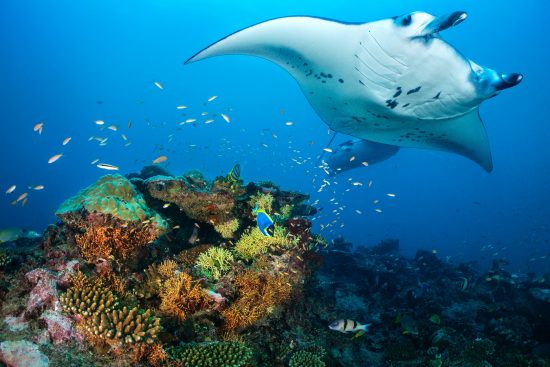
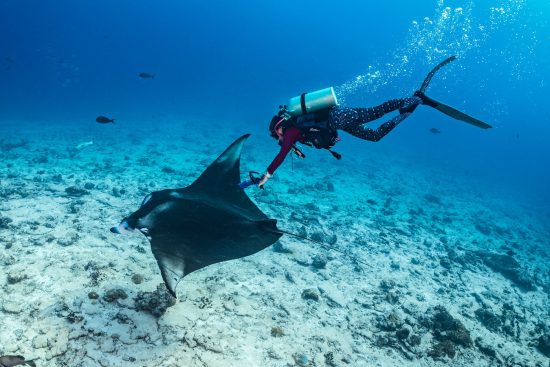
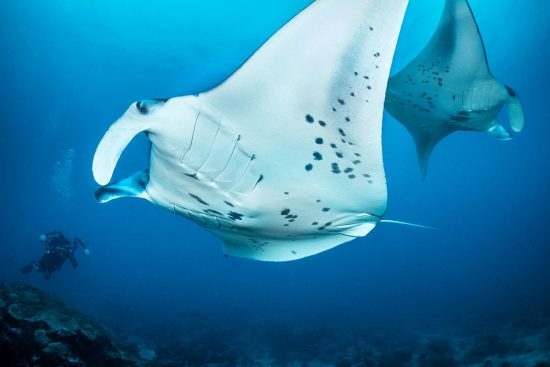
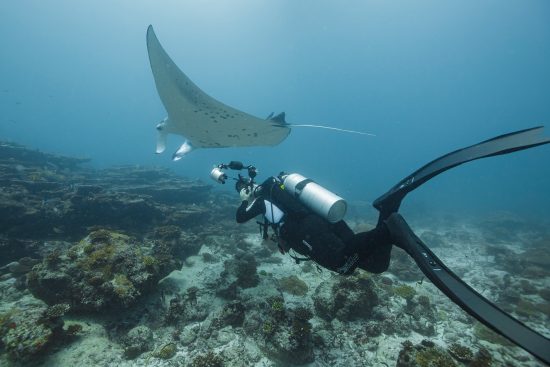
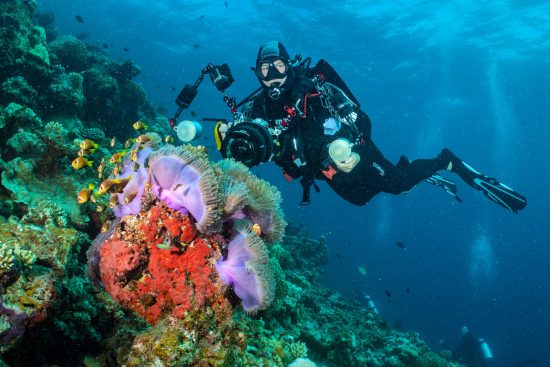
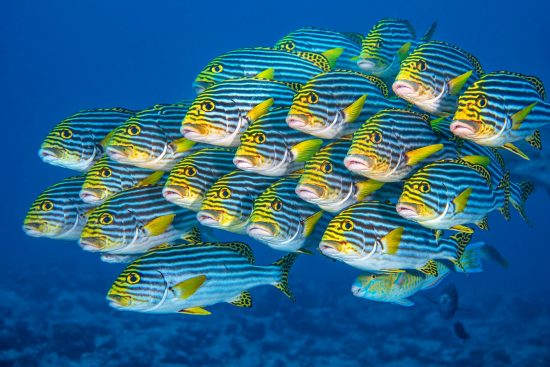
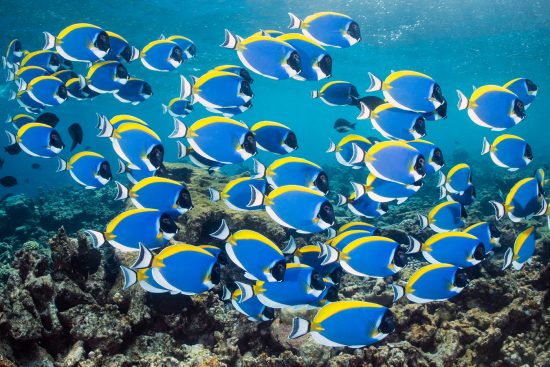
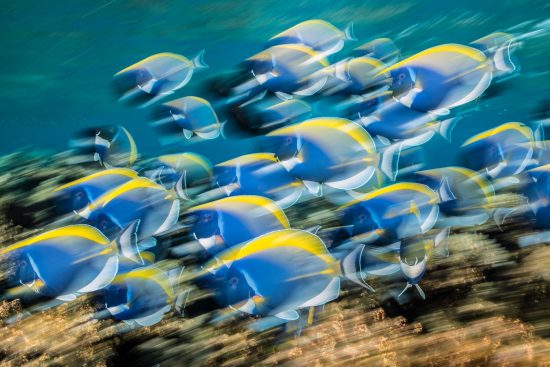
Laamu atoll is in the south of the Maldives, and with only one resort on the island (the beautiful and luxurious Six Senses Resort), it is less known and far less dived than most of the spots in this popular diving country.
One of the attractions of diving around the Maldives are the different characteristics of the different atolls, which impacts on the structure of the reefs and the feel of the dives. As you head south, the atolls are younger, and the ring of reefs and islands is more complete, with less connection to the ocean outside. This changes both the reefs and the marine life. That said, this is still the Maldives, so all the classic attractions are still here: there are lots of schools of big reef fish, sharks, mantas, turtles and much more to keep divers and underwater photographers very busy.
Most of my diving in the Maldives has been around the central atolls, where the best dive sites regularly attract multiple liveaboards and resort diving boats.
So, the first thing you notice in Laamu is that there are no other dive boats and no other divers. This gives the diving a fantastic 'wilderness' feel, as you just don't see any other people when heading out to most of the sites. It means we go to whatever sites we fancy, when the conditions are optimum, without having to worry about avoiding crowds.
As a travelling diver, my photography is often inspired by what is unique in a location: the species, scenery and diving attractions that define it. That is a fancy way of saying that most of the time, I like to photograph what is common wherever I am, which both makes life easier for me and helps me tell the story of a place.
You can’t think of the Maldives without thinking about mantas, and my visit coincided with pupping and mating season for the mantas of Laamu, which means that you often see heavily pregnant females with bulging bellies. The Manta Trust study mantas across the Maldives, and in Laamu they have even used a unique underwater ultra-sound system to scan their bellies (something that I photographed in action on a previous visit). The advantage of mating season is more mantas, because each adult female is usually accompanied by several male suitors. Most of all, though, it was just uplifting to see these graceful, intelligent creatures for the first time since 2019. They are one of the species I missed the most during lockdowns.
I had the luxury of two pairs of fins on this trip – though both were full-foot fins to save me the weight of taking boots. I used my much loved Volo Race fins on the reef dives - I have logged over 2,000 dives in these fins and many, many of my photographer friends use them too. They are light for travel, super comfortable and great for the fine manoeuvres that we snappers make to line up the perfect composition. However, in the Maldives, I switched to my freediving fins (Razor Matrix) for the outside reef and channel dives. The freediving fins are not as good for manoeuvring (the Volos are so easy to swim backwards in) but the Razors gave me real power in the currents or to close down distances out in the blue. I also used the Razors on all the manta dives, as the cleaning stations were always on outside reefs. My Razors are the soft blades, but I am still trying to decide if they are not too soft. Some dives I felt they were, others I thought they were perfect. It might have been all the switching back and forth. I need to do more dives with the Razor Matrix fins, which should come next year in the East Pacific.
Another subject in the crosshairs of my lens were reef fish, especially those species that seem so characteristic of the Indian Ocean. Two standouts are oriental sweetlips, with their dopey expressions and eye-catching yellow, black and white colouration, and powder blue surgeonfish, whose elegant pattern is seemingly laid out by a graphic designer. While I enjoy photographing both species as individuals, I mostly want schooling pictures, which speak of the super abundance of fish life in the Maldives. Thankfully Laamu provided these subjects in abundance.
As with any coral reef trip, the diving provided almost endless species to shoot, from big animals down to macro marvels. Both green and hawksbill turtles are common, and I couldn’t resist indulging in snapping up portraits of the reef’s blenny and goby community!
 Alex
Alex 9th December 2021
9th December 2021